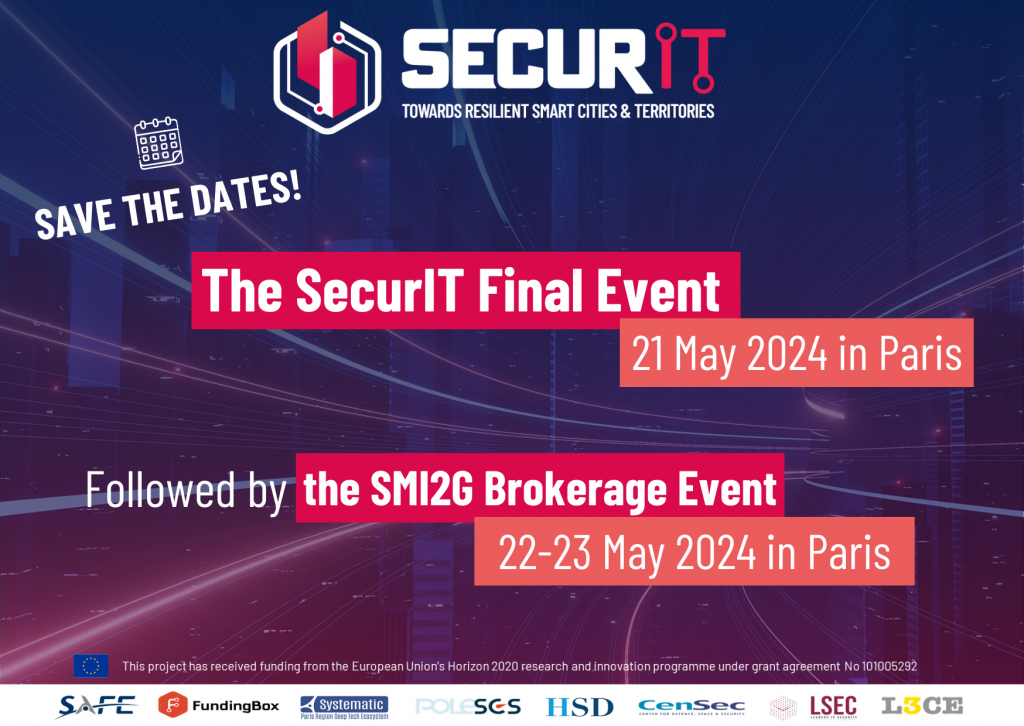DOMAIN #1
Sensitive infrastructure protection

Sensitive infrastructure protection pertains to the securing of assets and systems that are essential for the functioning of a society and economy. Examples include the provision of gas and oil, agriculture, and telecommunication. The security of sensitive infrastructure is a major concern, confirmed by recent events, in the context of social unrest, terrorist threats and even a pandemic. If this type of infrastructure is exposed to external threats, this will have major consequences for society as a whole. The solutions should address hybrid threats, permit to enhance capabilities, and consider the increasingly interconnected, complex and interdependent networks and systems.
Targeted end-users. Eg. safety director of vital importance and Seveso classified industrial facilities, airports, hospital infrastructure, energy suppliers, and operators (e.g. electricity, gas, telecommunications, etc.).
Solutions. The solutions developed in this domain will have to integrate the following considerations: maintainability, acceptable price, foresight scanning, and interoperability with existing solutions.
DOMAIN #2
Disaster resilience

There is a need for instruments that facilitate improved prevention and preparedness in crises, extreme events and natural disasters. In this second focus area of SecurIT, the solutions should focus on development of technologies to strengthen the capacities of first and second responders in all operational phases, and where relevant, to increase societal resilience towards and for citizens. Innovative technologies can help detect, analyse, treat, and/or prevent major natural events. This domain focuses on climate-related risks and extreme events, geological disasters such as wildfires, earthquakes, tsunamis, and pandemics, but also accidental disasters and human-induced disasters (food safety, industrial accidents, infrastructure failures, nuclear accidents, and others).
Targeted end-users. Eg. first responders; cities and territories, and their governmental structures.
Solutions. The solutions developed in this domain will have to consider citizen involvement and acceptation and transparency. All solutions will also have to ensure the continuity of operations.
DOMAIN #3
Public spaces protection – major events

The objective of this domain is to develop innovative tools that create increasingly connected and protected cities in which the population takes on a more active role in serving the community. These solutions should integrate and consider state-of-the-art technologies like in Artificial Intelligence, Cloud computing, and Big Data.
Targeted end-users: Eg. cities and territories (security of public roads); venues open to the public (e.g.: stadiums; concert zone; train station etc.).
Solutions: The solutions developed in this domain will have to consider the legal constraints of personal data protection.
DOMAIN #1
Sensitive infrastructure protection

| Sub-domains | Challenges and potential areas of needs |
|---|---|
| Cybersecurity | 1.1. Development of cybersecurity solutions for sensitive infrastructure protection |
| Operations | 1.2. Optimisation of communication networks and alert systems |
| Identification and access control | 1.3. Development and optimisation of identification and access control for rapid access in the site, all while ensuring that no one and nothing that enters poses a security risk |
| Zone security and perimeter protection | 1.4. Development of solutions to detect and locate any intruders that have managed to penetrate the perimeter protection and barriers to block intrusions |
DOMAIN #2
Disaster resilience

| Sub-domains | Challenges and potential areas of needs |
|---|---|
| Prior to crisis – prediction:
Risk knowledge and evaluation |
2.1. Optimisation of prediction of disaster |
| During the crisis:
Mass communication and warning systems |
2.2. Optimisation of communication and warning systems in case of disaster |
| After the crisis:
Post event analysis and recovery |
2.3. Development of solutions for a better recovery |
DOMAIN #3
Public spaces protection – major events

| Sub-domains | Challenges and potential areas of needs |
|---|---|
| Detection, alert and behaviour analysis | 3.1. Gather and manage real time information |
| Analysis | 3.2. Analyse and extract pertinent and potentially crucial information as quickly as possible |
| Command and control (resource management) and decision-making support | 3.3. Communication networks and post-event analysis |
| Data protection and cybersecurity – cybercrime | 3.4. Detection |


